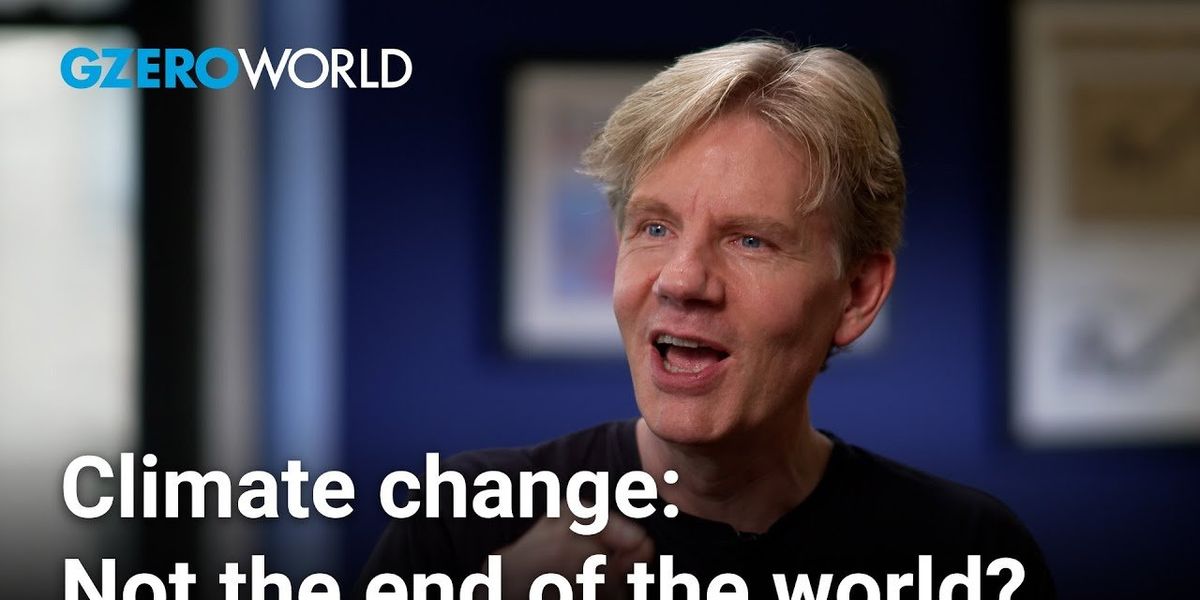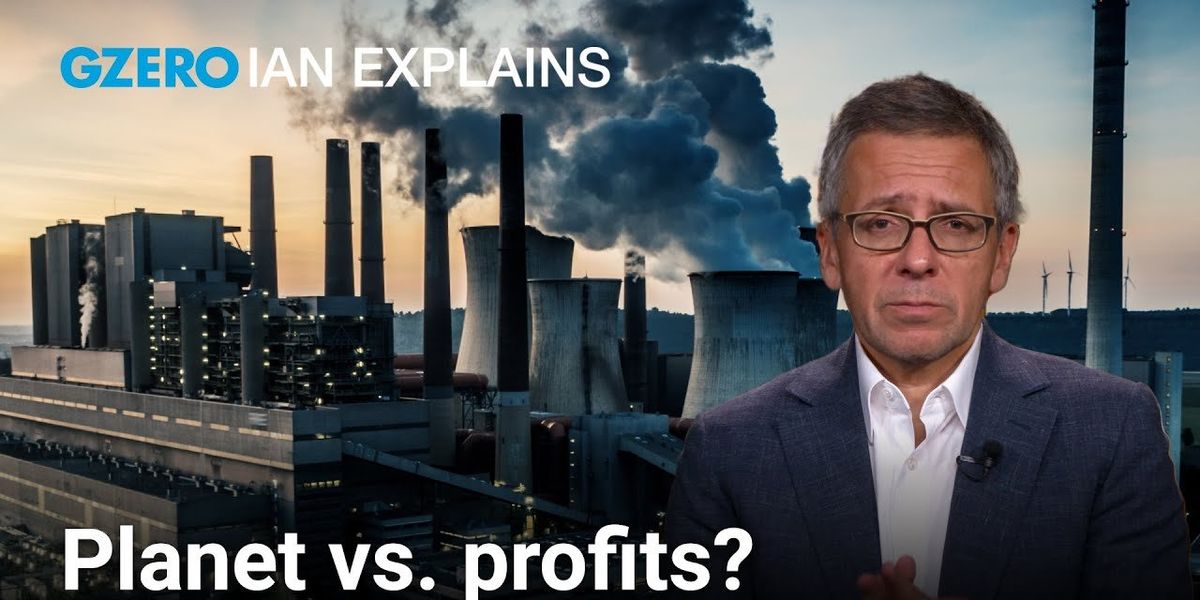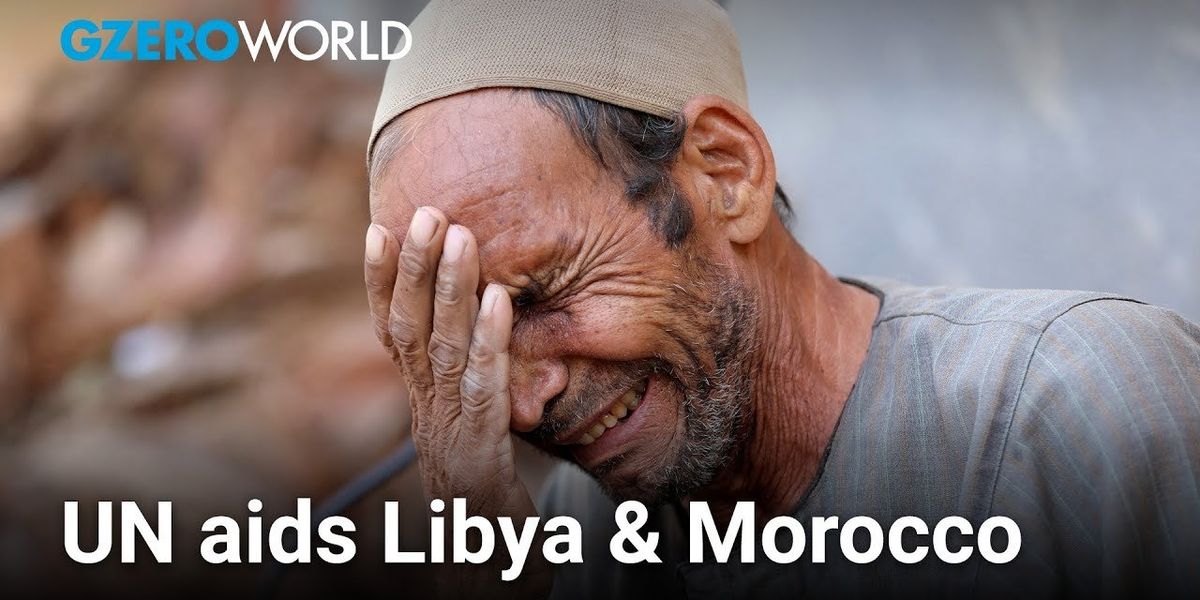Trending Now
We have updated our Privacy Policy and Terms of Use for Eurasia Group and its affiliates, including GZERO Media, to clarify the types of data we collect, how we collect it, how we use data and with whom we share data. By using our website you consent to our Terms and Conditions and Privacy Policy, including the transfer of your personal data to the United States from your country of residence, and our use of cookies described in our Cookie Policy.
{{ subpage.title }}
Eastern Cape EMS Rescue team searches for missing Jumba Senior secondary school students at Efata bridge next to Mthatha Dam in Mthatha, South Africa on June 10, 2025
HARD NUMBERS: Flooding in South Africa, one lucky Canadian & More
49: Flooding in South Africa’s Eastern Cape, the result of snow and heavy rain, has left at least 49 people dead, including several people on a school bus that was swept away by the waters.
15: South Korea has switched off the loudspeakers that blast propaganda across the border into North Korea – the noise can be heard 15 miles away at night. The move comes a week after Democratic Party leader Lee Jae-myung, who favors de-escalation with the North, won the presidential election.
3%: The United Kingdom’s National Health Service was the big winner of the Government’s spending review on Wednesday, as Chancellor of the Exchequer Rachel Reeves increased the annual healthcare budget by 3% – amounting to another £29 billion ($39.2 billion) per year. Other departments, like the Foreign Office and the Environment Department, suffered cuts.
4: All of us dream of winning the lottery just once, but one man in Alberta, Canada, has now done it four times! David Serkin pocketed $730,000 from his latest jackpot – his third in the last year. He also happens to be a cancer survivor. He Serkin-ly has the luck of the draw!Congolese civilians who fled from Bukavu, eastern Democratic Republic of Congo, following clashes between M23 rebels and the Armed Forces of the Democratic Republic of the Congo, carry their belongings as they gather at the Rusizi border crossing point to return home, in Rusizi district, Rwanda, on Feb. 17, 2025.
Hard Numbers: Rebels advance in DRC, Yuge trade corridor, Tragic flooding strikes US, UN seeks billions for Sudan, Taliban visits Japan, Plane crashes in Toronto
350,000: M23 rebels are meeting little resistance in their advance on Bukavu in the eastern Democratic Republic of Congo, further challenging Kinshasa’s rule. This move comes after the Rwandan-backed rebels seized control of Goma late last month and just two days after the UN warned that unrest in the country has displaced 350,000 people.
600: Israel and India are working on a free trade agreement they hope to announce as early as 2025. Israeli and Indian business leaders held over 600 meetings in New Delhi last week, on cybersecurity, smart agriculture, renewable energy, digital health, and water technologies, AI, and big data. Meanwhile, US President Donald Trump continues to push for the rail and shipping corridor advocated by his predecessor, Joe Biden, to connect India to the Middle East, Europe, and the US, which he and Indian Prime Minister Narendra Modi call “one of the greatest trade routes in all of history.”
10: Severe flooding claimed the lives of at least 10 people in the United States over the weekend, including nine in Kentucky and one in Georgia. Storms walloped Kentucky, Georgia, Alabama, Mississippi, Tennessee, Virginia, West Virginia, and North Carolina, with Kentucky Gov. Andy Beshear saying that nearly 1,000 people had to be rescued.
6 billion: The United Nations announced on Monday that it wants to raise $6 billion for Sudan to help alleviate one of the world’s worst hunger crises caused by nearly two years of civil war between the Sudanese army and the paramilitary Rapid Support Forces. The need, the agency says, has increased 40% from last year’s appeal.
1: While Afghanistan’s Taliban government makes regular visits to countries close to home, such as Russia, China, and parts of Central Asia, this weekend it went further afield. The Taliban sent its first-ever delegation to Japan on Sunday to seek humanitarian support and to discuss establishing diplomatic ties with Japanese leaders. One Afghan leader said that the Taliban seeks “dignified interaction with the world for a strong, united, advanced, prosperous, developed Afghanistan.” Japan’s foreign ministry has not commented yet on the visit.
18: A Delta Airlines flight from Minneapolis crash-landed at Toronto's Pearson airport on Monday, injuring at least 18 people, three critically. The plane crashed and flipped upon landing at the airport, which is located just outside Toronto. All 80 passengers and crew are accounted for, and crews are on hand to investigate what happened.
Floodwaters cover a parking lot on the Yantic River after heavy rains in Norwichtown, Connecticut, U.S., January 10, 2024.
The rising costs of “once-in-a-thousand-years” floods
Last weekend, rainfall in the northeast caused heavy flooding in parts of the United States and Canada as the region experienced yet another wave of unprecedented flooding.
On Monday, the governor of Connecticut declared a state of emergency as officials began cleanup efforts. The flooding killed two residents and hundreds were evacuated. The floods also affected parts of New York and grounded flights at JFK, Newark, and LaGuardia.
Just outside Toronto, the city of Mississauga set a rainfall record with 5 inches of rain falling and flooding streets.
The cost of the flooding is still being tallied, but it’s going to be expensive. In July, a flood in Toronto that saw four inches fall led to insured damages of more than CA$1 billion. According to the Insurance Bureau of Canada, severe weather events last year cost insurers over $3 billion, with year-over-year costs trending up, with billions more in infrastructure damage.
In the US, the costs are even higher. The Joint Economic Committee estimates that floods alone cost the country between $180 and $496 billion each year, including infrastructure costs to keep up with floods, which run into the tens of billions yearly on the low end.
Climate change is set to continue to drive up costs as extreme weather events become more frequent and damaging, putting stress on insurance rates, public coffers, and the accuracy of calling these increasingly common events “uncommon.”
A drone view shows a flooded area following heavy rainfall in Rock Valley, Iowa, U.S. June 22, 2024, in this still image obtained from a social media video.
Hard Numbers: Massive US floods, Dagestan attacks, Bad booze, Deadly Hajj, Toodaloo to Taylor Swift
1,000,000: Over a million people in the Upper Midwest were under flood warnings on Sunday after several days of heavy rain forced thousands to evacuate in parts of Iowa and South Dakota. Iowan officials said the inundation has already exceeded the 1993 flood that killed 50 people, and the worst of the flooding is expected Monday and Tuesday.
15: Terrorists in Russia’s Dagestan province killed at least 15 police officers, four civilians and an Orthodox priest in coordinated attacks on churches, synagogues, and police stations in two cities on Sunday. Dagestan is a majority Muslim region with a history of extremist violence, and the tragedy follows ISIS-K's brutal slaying of 140 civilians in a Moscow concert venue in March, but no group has yet claimed responsibility for the attacks.
54: At least 54 people in the Indian state of Tamil Nadu have died after drinking alcohol polluted with methanol. Dozens more have been hospitalized. Methanol is, chemically speaking, also a type of alcohol, but it needs to be filtered from ethanol (the fun stuff) or it can cause severe liver damage, blindness, and death. The likely culprit is homebrewed alcohol, which many in India consume despite the health risks because store-bought booze is too pricey.
1,000: Over 1,000 people died during this year’s Hajj pilgrimage, Saudi officials said Sunday. No explanations were offered for the deaths, but the governments of Jordan and Tunisia blamed excessive heat, and reporters on the scene witnessed pilgrims passing out, vomiting, and collapsing under the searing sun.
88,446: Taylor Swift said 88,446 people attended her concert in London’s iconic Wembley Stadium on Friday. The Prince of Wales attended – he was celebrating his 42nd birthday – and netted a selfie with the pop star and two of his children, Prince George and Princess Charlotte."Climate is a problem, not the end of the world" - Danish author Bjorn Lomborg
How far should the world go to stop climate change? On GZERO World with Ian Bremmer, controversial Danish author Bjorn Lomborg discusses his perspective on climate and how it differs from the global climate narrative.
Lomborg acknowledges that global warming is a genuine problem but argues it’s not an apocalyptic threat. This nuance is important, Lomborg says. Because it allows for a more balanced approach to addressing climate, as opposed to an all-encompassing focus on the issue of lowering carbon emissions.
Because most of the world still runs on fossil fuels, he says, the singular focus on net-zero emissions is inefficient and misguided. Instead, Lomborg advocates for a greater emphasis on green innovation as a more practical way to address climate concerns.
Watch the full interview on GZERO World: Climate change: are we overreacting?
Catch GZERO World with Ian Bremmer every week at gzeromedia.com/gzeroworld or on US public television. Check local listings.
Ian Explains: Can we save the planet without hurting the economy?
“How much are we willing to sacrifice to stop climate change?”
That’s how the conversation is usually framed, that fighting climate change requires some sort of trade-off: save the planet vs. maintain living standards, reduce carbon emissions vs. increase profits, lower global temperatures vs. lift more people out of poverty.
On Ian Explains, Ian Bremmer argues that this framing is actually a false choice. In the last decade, the underlying technology and economics of decarbonization have improved so much, we no longer need to choose between investing in climate mitigation and economic growth. In fact, clean energy technology like solar panels, wind turbines, and advanced battery storage have become, in many ways, more affordable than fossil fuels.
But despite the clear advantages of decarbonization, powerful interests like Big Oil, fossil fuel workers, and petrostates seem determined to cling to the status quo and slow down the green transition. Can competing interests put aside their differences and short-term goals to come up with a climate policy that works for everyone?
Watch more on this episode of GZERO World with Ian Bremmer on US public television (check local listing) and at gzeromedia.com/gzeroworld.
- Climate crisis can't be hijacked by global competitions: Justin Vaisse ›
- Geoengineering: science fiction or a solution to the climate crisis? ›
- Want to fix climate change? This is what it’ll take. ›
- What Africa has to say about climate change ›
- The Graphic Truth: Has climate change hurt or helped farmers? ›
- Climate change is "wreaking havoc" on supply chains ›
UN mobilizes to help disaster-stricken Libya and Morocco
First, there was the devastating earthquake in Morocco. And then, cataclysmic flooding in Libya. Recent natural disasters in northern Africa have shocked the world. They've also mobilized United Nations rescue and support teams, says UN Secretary-General António Guterres in an exclusive GZERO World interview.
“We have a central emergency response fund, and we mobilized $10 million to support the operation in Libya," Guterres tells Ian Bremmer. "We are discussing, with Moroccan authorities, our best way to support them...We'll be doing everything to mobilize international community to support these two countries in this very, very tragic situation."
What role can the United Nations play in these devastated zones, and how much is a warming planet contributing to recent climate catastrophes?
For the full interview, tune into GZERO World with Ian Bremmer at gzeromedia.com/gzeroworld or on US public television. Check local listings.
Jeff Larsen, left, and Robbie Jones watch cars drive on flooded streets during Tropical Storm Hilary in Palm Springs, Calif., on Sunday.
Out of the fire and into the flood
Just two years ago, the state of California suffered a record number of wildfires, the hottest summer in its history, and severe drought. In 2023, it’s facing the opposite: a deluge of rain and flooding from the first tropical storm to slam the state in 84 years.
Tropical Storm Hilary made landfall Sunday afternoon in the Baja California peninsula of Mexico, leaving a trail of devastation and killing at least one. A man drowned when a car was swept away by floodwaters in the town of Santa Rosalia; four other people were saved.
Despite being downgraded from a category 4 hurricane, Hilary still posed a risk of “life-threatening” floods. Californians were taking it seriously: Gov. Gavin Newsom declared a state of emergency in the southern part of the state, airlines canceled 1,000 flights, and even the actors’ strike was paused.
Up to nine million people from San Diego to Los Angeles were on alert for the storm's high winds and flooding, with some areas getting more than half a year's worth of rainfall in just one day. (For context, the average August rainfall in southern California is zero.) A 5.1-magnitude earthquake also struck Sunday afternoon near Ojai, about 80 miles northwest of Los Angeles. By early Monday, the storm had toppled trees and caused landslides around San Diego, and 65,000 Californians were without power.
Then there’s the political fallout. US President Joe Biden was already criticized for his “no comment” remarks when asked about the devastating fires in Maui last week, and for not cutting short his vacation in Delaware as the tragedy unfolded. While he was on the phone daily with officials and issued a written statement of condolence early on, he only made his first public remarks about the fires five days later. He is scheduled to visit the Aloha state on Monday.
This time, Biden issued a statement on Tropical Storm Hilary as it hit Sunday afternoon. “As soon as [the storm’s] path became clear, my Administration took immediate action to prepare,” it read. Biden’s support included deploying federal personnel and supplies and prepositioning Coast Guard aircraft for rapid response and search-and-rescue missions. We will be watching to see whether Californians think he’s done enough.

